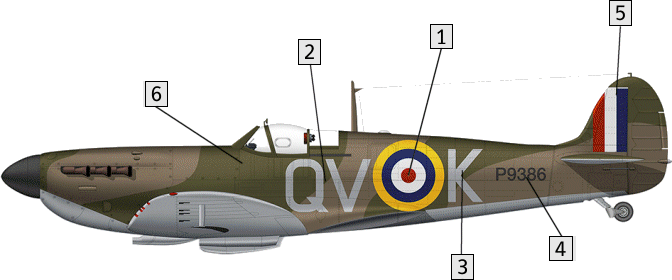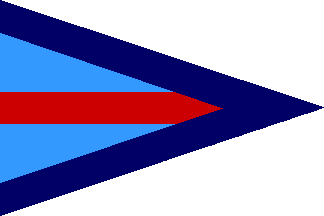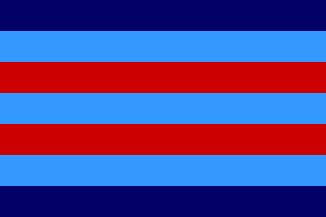You may have noticed that each plane that is on the royal air force’s roster consist of a set That starts with two letters, insignia and then one letter, And what you also notice is I triangle like shape on most airplanes Mainly fighters, And when I look at all of the Royal Air Force Plains that were made in this game, Just doesn’t have all of the stuff that the real one has , I’m not saying this in a bad way I’m just saying that it’s not standing out so I’m going to guide you on How to make A more accurate royal Air Force plane from World War II And I will mainly talk about the markings.

1
Roundel: this is the roundel which was used by the raf during ww2 but there is insight to the roundel, (taken from Wikipedia) Pre-war
edit
Up until mid-1938, roundel sizes tended to vary widely, depending on the type of aircraft; the exception to the use of type A roundels for all aircraft was seen on the overall NIVO (a dark grey-green finish with a sheen) painted night bombers (e.g., Handley Page Heyfords) which used type B roundels. Roundels used on aircraft painted in NIVO were duller than the normal colours. The size of the roundel was generally determined by the space available at the specified location, with a space of several inches around the edges. Some aircraft – primarily seaplanes, had a white outline around the fuselage roundel, even on silver doped finishes however this application was inconsistent so was probably not official. From 1929, the RAF switched to a new system of colour specifications, discarding the one used since the First World War, and as a result, the colour used for insignia changed, however the changeover period appears to have extended until at least 1932 for new production, and the old colours were not overpainted, but only gradually phased out as aircraft needed to be repainted.
During the Munich crisis of mid- to late 1938, most RAF aircraft adopted green and dark earth camouflage with type B roundels of reduced sizes on all upper surfaces and the fuselage sides; though based on colour photos, these remained in the bright pre-war colours. FAA aircraft largely remained silver doped overall with type A roundels predominating. To illustrate the progression up to the end of the war the Spitfire will be used as a typical single seat-single engine fighter:
1938 – November 1939: The first production batches of Spitfires (aircraft registrations K9787-K9814) were built with 37.8 inches (96 cm) roundels on the fuselage sides-these were centred 39 in (990 mm) aft of the rear edge of the cockpit door. 56 inches (140 cm) type A1s were on the upper wings. From K9815, the fuselage roundels were moved back, to be centred 53 inches (130 cm) aft of the cockpit door and 6 inches (15 cm) above the main longeron, and reduced in diameter to 35 inches (89 cm) type A1. This position for the fuselage roundel was subsequently standard on all Supermarine and Westland built Spitfires and Seafires. The first 180 or so built (K9787–K9960) also had factory applied 50 inches (130 cm) type A roundels under the wings. After K9960, there were no factory applied under-wing roundels until December 1940. With the change to type B roundels Spitfires built with type A.1 roundels had were repainted by the squadrons creating a plethora of sizes and proportions.
Between K9961 and N3032, the factory paint scheme required 15 inches (38 cm) type B roundels on the fuselage sides and a 31.2 inches (79 cm) roundel with a 10 inches (25 cm) red centre on the upper wings. From N3033–P9374, it was intended that 25 inches (64 cm) type B fuselage roundels would be used, although few Spitfires saw service with roundels of this size.[11]
Most RAF aircraft went through similar transitions, as a result of which there was little conformity, depending on when the aircraft was built and how squadrons over painted or repainted the roundels.
Second World War
edit
By the beginning of the Second World War on 3 September 1939, RAF roundel sizes started to show more conformity. On 30 October, all commands were ordered to change upper wing surface Type B roundels to Type A. Further instructions ordered all but fighters and night bombers to have Type A under the wing tips. This was clarified in November to the effect that only reconnaissance maritime aircraft (e.g., Short Sunderland flying boats) would have the Type A on the upper wings but all aircraft would use the Type B on the sides.[12]
A decision was made to make roundels more conspicuous and, in May 1940, the yellow outer ring was ordered to be added back to fuselage sides (along with red, white, and blue stripes on the fin). Where possible, the yellow should be the same width as the blue, but on Spitfires with their narrower fuselages a thinner ring was acceptable. Also in May, an order was made to put red, white, and blue roundels on the underwings of all fighters, with an addendum that where the roundel was on a black background it should be outlined in yellow. In June, orders were given for the half black/half-white underwing scheme to be replaced by "sky"[13] Underwing roundels were dispensed with until August when they were ordered back.[14]
Because of the pressures of front-line service there were always exceptions to the standards set by the RAF and that deadlines were not necessarily met. Although type C and C.1 roundels were meant to be in use by July 1942 some Spitfires displayed type A and A1 roundels as late as October:
Late November/early December 1939 to June 1940: All Spitfire units were instructed to replace the type B fuselage roundels with type A roundels. This led to fuselage roundels which varied in size from 25 inches (64 cm) to 30 inches (76 cm). Upper wings had been set at 55 inches (140 cm)[15] Type B with 22 inches (56 cm) red centres until January 1945; Fuselage sides: 35 inches (89 cm) type A; no fin flash; no underwing roundels.[11]
June 1940 to December 1940: Spitfires with the 35 inches (89 cm) type A fuselage roundels had a yellow outer ring added, making them 49 inches (120 cm) Type A1. All Spitfires built from June had standardised 35 inches (89 cm) fuselage roundels, although many had non-standard 7 inches (18 cm) red centres applied at the Supermarine factory, instead of the specified 5 inches (13 cm). All Castle Bromwich built Spitfires had roundels with the correct 5 in (130 mm) centre spot; in addition all Castle Bromwich built Spitfires had the roundels centred 52.25 inches (132.7 cm) aft of the cockpit door and 7.5 inches (19 cm) above the main longeron. As many Spitfires as possible had type A roundels painted under the wings, along with a pale green/blue camouflage colour. The under wing roundels varied widely in size and location depending on which Maintenance Unit (MU) prepared the aircraft before delivery to the squadrons. The Spitfire 1a of 19 Squadron shown in photo 5 has 25 inches (64 cm) Type A under the wingtips, indicating it may have been processed by 6 MU.[11][16] Fin flashes were painted on starting in late May 1940. These varied in size although they were mostly 21 inches (53 cm) wide, divided in three red, white, and blue strips, and covered the full height of the tail fin.
December 1940 to July 1942: 35 inches (89 cm) type A1 fuselage roundels, 50 inches (130 cm) type A on lower wings. Fin flash standardised at 27 inches (69 cm) high and 24 inches (61 cm) wide, equally divided into three 8 inches (20 cm) stripes.
July 1942 to January 1945: 36 inches (91 cm) type C1 fuselage roundels. 32 inches (81 cm) type C lower wing roundels. Fin flash 24 inches (61 cm) square with stripe widths of 11 inches (28 cm), 2 inches (5.1 cm) and 11 inches (28 cm).[17]
January 1945 to June 1947: On all 2 TAF aircraft Type B upper wing roundels were either converted to 55 inches (140 cm) type C1 roundels or over-painted and 36 inches (91 cm) type C1 roundels painted on. Under wing roundels were converted to 36 inches (91 cm) type C1. The proportions of the rings and centre spot could vary depending on the skill of the painters carrying out the conversion.
Although the Spitfire is used as one example, because it was one of the few British aircraft to see front-line service before, during and after the Second World War, other aircraft types went through similar transitions. During the transition from A type to C type roundels some Hawker Typhoons displayed 42 inches (110 cm) type C1 roundels which were modified from type A1s(wikipedia).
2
Squadron Code - This identified the squadron the aircraft belonged to. So in this instance, the letters QV let us know this is a No. 19 Squadron aircraft, nearly all squadrons will change this code at a point in its existence; for example the squadron code of the NO.103 bombing squad used to have GV as their sc from August to September of 1939 before changing it to “PM” which would be to stay for the rest of the war
3
Aircraft Identity Letter - This identified the aircraft within the squadron.
4
Aircraft Registration Number - This identified the individual aircraft. So, in the case of this aircraft, (P9386), we can find out that it joined No. 19 Squadron in May 1940 before joining No. 152 Squadron in September 1940. For bombers and other aircraft, it can be located on the tail.
5
Fin Flash – This helped to aid aircraft identification.
6
Aircraft Insignia - Although not on this aircraft, insignia was sometimes added to identify a squadron, for example No. 302 Squadron, which was a Polish fighter squadron, had the Polish Air Force roundel (right) painted on their aircraft.
And then there is this,


Those are rank pennants, they work like ranks and are painted on the plane fuselage to tell if a pilot is an air commodore (top), wing commander (middle) or air chief marshal (bottom).
That is all I have to say.
Made On June 10,2024
